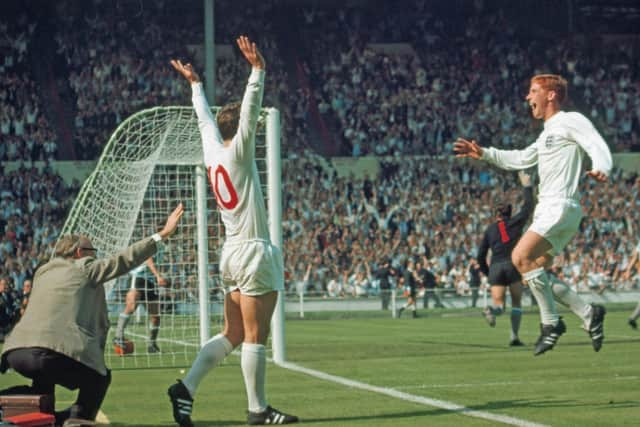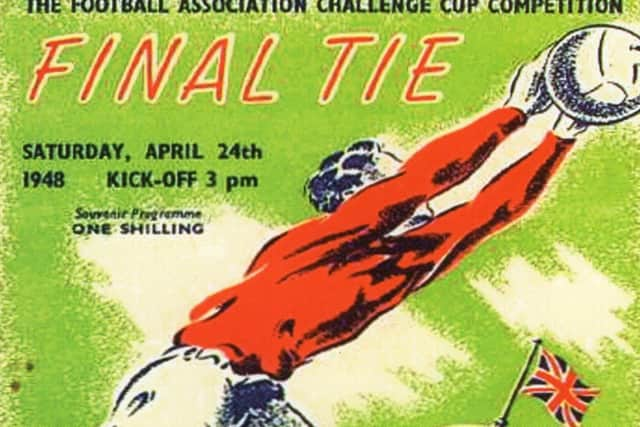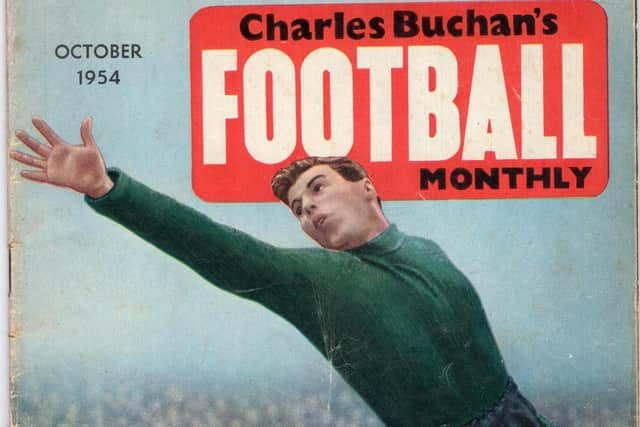Unforgettable view from the terraces of Blackpool Football Club's Bloomfield Road
and live on Freeview channel 276
The charm of the old grounds like Bloomfield Road – which is sometimes lost amid the architecturally spectacular, symmetrical design of the new generation of stadiums – was in their piecemeal, organic quality, with clear evidence of their development and evolution over time.
When they weren’t overcrowded, terraces were a wonderful way to watch football. (Plans have been approved to restore small ‘safe standing’ areas to some Premier League grounds in January.) In the East or West Paddocks at Bloomfield Road, you could stand wherever you wanted: right at the back for a high-level view or pitch-side to get really close to the action.
Advertisement
Hide AdAdvertisement
Hide Ad

At half-time you could sit down on the terrace, or lean against the crush-barrier, and read your programme. Then, at least in the days before crowd segregation, you could stroll to the other end, past the dugout, so you could still watch the Seasiders on the attack in the second half when the teams changed ends. And you could move somewhere else if you were getting earache from a fan behind you or there was someone particularly tall in front.
Another half-time highlight was checking the scores from other matches being played at the same time, particularly those involving your rivals. In the days before transistor radios, most grounds had a half-time scoreboard which comprised a grid of capital letters each of which signified another match. At half-time, numbers were inserted next to the letters and you then checked them against the match code in your programme. The alternative was to keep an ear out for the Tannoy announcement of the half-time scores, but these were notoriously unreliable, especially when there was a large and noisy crowd.
Matches invariably kicked off at 3pm on a Saturday afternoon, not according to the whims of a satellite broadcaster.
The arrival of floodlighting brought a fresh dimension – evening games – to watching football. Blackpool’s tall floodlight pylons were put up four years after the 1953 triumph. Sheffield United’s Bramall Lane ground reputedly had floodlights as early as 1878, but the first club to have permanent floodlighting were Southampton, who installed it at their old ground, The Dell, in 1950. Classic Wembley finalsWhen you visited a ground for an evening match, there was the thrill of first sighting the four prominent floodlight towers which were like beacons for locating it. Once inside, the pitch was bathed in brilliant artificial illumination. Modern grounds, like the new Bloomfield Road, tend not to have the high pylons that were such a dominant feature of the old stadiums; the lights are often built into the edge of the roof. (A Blackpool match once had to be called off because of floodlight safety fears as a gale raged off the Irish Sea.)
Advertisement
Hide AdAdvertisement
Hide Ad

Then there was the excitement of buying the match programme, much less elaborate than today’s magazine-like versions. There were no replica shirts or Sky TV and multiple camera angles – just scarves and bobble-caps – and no elaborately choreographed goal celebrations. Any player wearing gloves on a cold day would have been dunked in the communal bath.
Particularly at British grounds like Bloomfield Road, the atmosphere was enhanced by the spectators being so close to the pitch. When West Ham moved from the venerable Boleyn Ground at Upton Park to the former Olympic stadium at Stratford in 2016, Hammers fans complained about the loss of atmosphere, partly induced by the fact they were so far from the pitch. Temporary seating was placed over the running track but this didn’t seem to make the ambience any more bubbly.
The importance of fans’ engagement was underlined during the Covid-19 crisis, when statistics showed that away teams were performing better than usual because no home supporters were there.
There are still terrace chants, of course – some exhibiting extremely ingenious obscenity – but, thankfully, health and safety seems to have banned rattles: the collateral damage caused by frantically whirling a heavy block of wood in a confined space can only be guessed at. Football is certainly more family-friendly, and there are more women supporters.
Advertisement
Hide AdAdvertisement
Hide Ad

